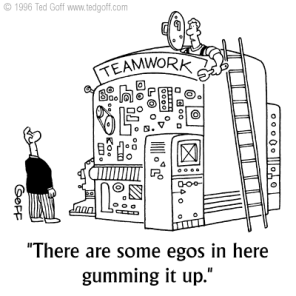TOOLBASED TEAM ASSESSMENT
AND TEAM DESIGN
AND TEAM DESIGN
For the success and growth of the enterprise, a strong and complete management team is indispensable. But a team consists of a number of unique individuals, each one of them with an own character and personality, with potential strengths and also a number of possible pitfalls. Often with a powerful ego, vim and vigour.
However, it is in the interest of the organisation, and the individuals themselves, that this group forms a well functioning team, effectively interacting, clearly speaking with one voice, and shaping the right conditions for the organisation to carry out it's objectives.
For a leader it is a good thing to own a strong ego, but a leader's ego may also pose a risk for deteriorating the team's functioning. A stampeding leader's ego may even have dramatic consequences for an organisation.
LDpe has developed a toolbased methodology with which, step-by-step, the individual and team qualities can be identified and mapped. We give attention to the 'completeness' of the team and the interaction between team members, but also to the omissions in the role pattern and the strengths and weaknesses of their strategic reasoning and innovative thinking pattern.
With these insights the team may aspire to improve its functioning and realise further growth. But before that type of steps are initiated, a survey will have to take place on possible barriers, obstacles and risks.
Besides it is very necessary that all involved have the willingness and readiness to continue with such next steps.
LEVEL 1 MAPPING THE CURRENT SITUATION
Personalities, individual qualities and development perspective of team members
Organisation, structure and culture, actual problems and challenges
LEVEL 2 CONSTRAINTS AND PRECONDITIONS FOR SUCCES
Obstacles, barriers, risks for disfunctioning of the team
Relation between the leader, the team and the underlying teams
LEVEL 3 TEAM COOPERATION
Completeness, Roles and Team Interactions
LEVEL 4 TEAM EFFECTIVENESS
Perceptions versus Intentions
Collaborative Leadership
Solving Complex Problems
Initiating Innovation
LEVEL 5 TEAM DESIGN
Team Design
Strategic Reasoning
Innovative Thinking Styles
LEVEL 6 A LIVING ORGANISATION
Continuous Collegial Feedback
Dynamic Organisation Development with integrated succession management
Innovation with Natural Working Teams





